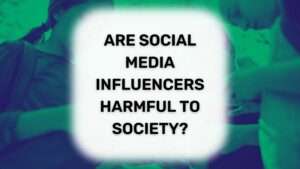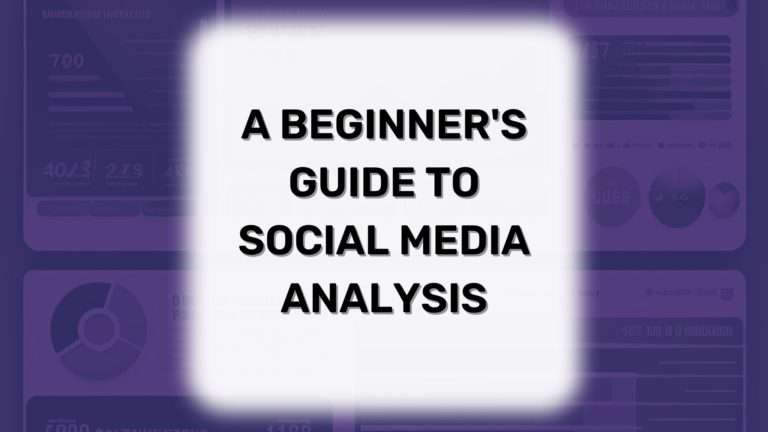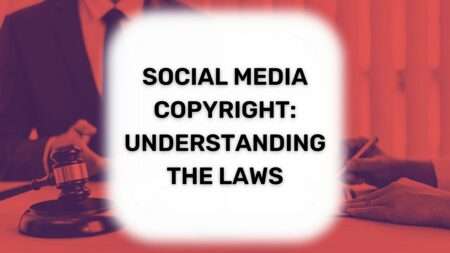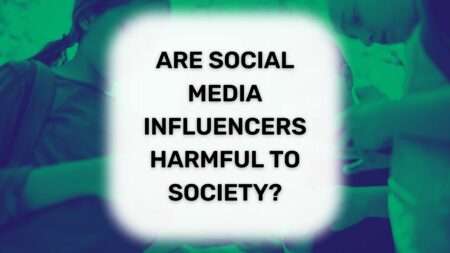What you’ll learn…
Introduction
Social media has become an integral part of our daily lives and an important tool for businesses to engage with their target audience. Over 4 billion active users are on social media platforms. So, it’s more important than ever to understand the people you’re trying to reach and the platforms they use. Enter social media analysis.
Social media analysis involves using tools and data to understand the behavior and preferences of your audience. It’s also used to monitor the performance of your social media accounts. With this information, you can adjust your social media strategy to better meet the needs of your target audience.
Studies have found that companies that regularly analyze their social media accounts see a 33% increase in website traffic, a 28% increase in lead generation, and a 23% increase in sales. These results demonstrate the powerful impact that social media analysis can have on a business. And, highlight the importance of investing time and resources in this area.
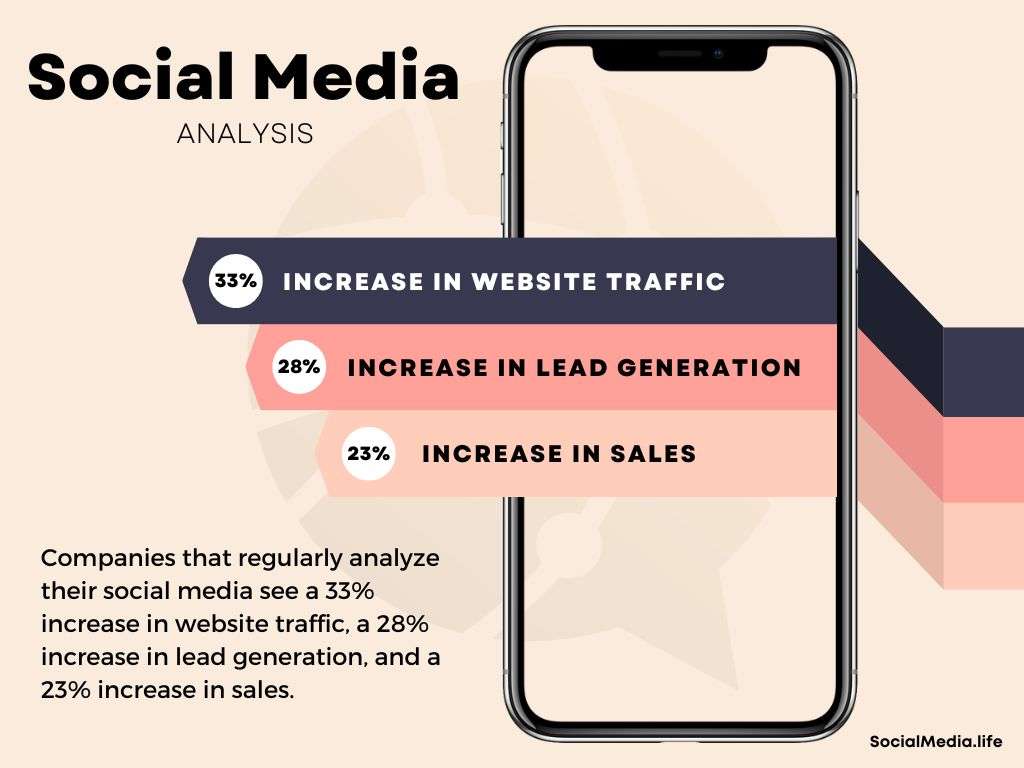
I. Understanding Your Audience
When it comes to creating a successful social media strategy, it’s important to first understand your target audience. Your target audience is the main group of people you want to reach and engage with on social media. There are two types of factors that influence your audience’s behavior on social media: demographic and psychographic.
Demographic factors
Demographic factors refer to the characteristics of your audience, such as age, gender, education level, income, and location. This information can be used to understand the basic characteristics of your audience. This allows you to create content that resonates with them.
Psychographic factors
Psychographic factors refer to the personality, values, interests, and opinions of your audience. This type of information can give you a deeper understanding of what drives your audience and what they care about. This, in turn, can help you create a more personalized and meaningful connection with your target audience on social media.
By understanding both demographic and psychographic factors, you can create a more effective social media strategy that resonates with your target audience.
Gathering Social Media Data
When beginning to gather data, pull information from your existing social media accounts. Identify the age and gender of your followers, the topics they engage with, and the time of day they’re most active. You can use built-in social media analytics tools to get more in-depth insights into your audience and their behavior. More on this later.
It also helps to stay updated on the latest platforms your target audience is using. If you have a target audience of young adults, it might be important to have a presence on platforms like TikTok and Instagram, as these platforms are popular among that age group.
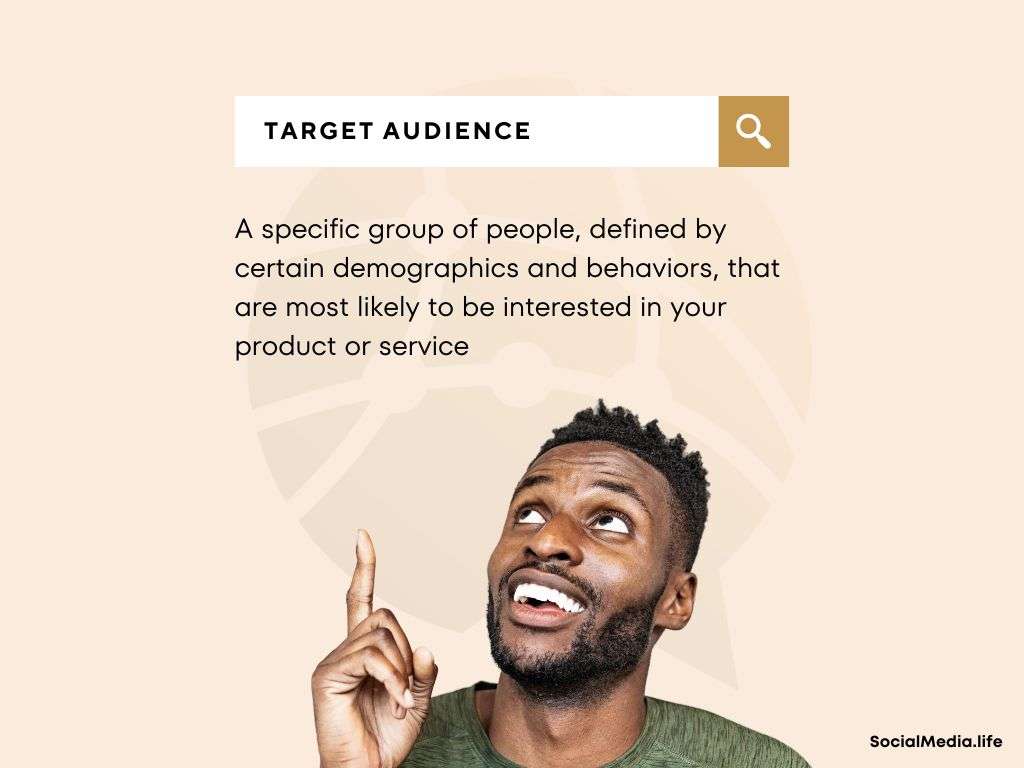
Using the information gathered from audience analysis, you can then adjust your strategy to better meet the needs and preferences of your target audience. If you find that your audience is most active on social media in the evenings, you might want to schedule your posts for those times. Or, if you find that your audience is interested in sustainability and environmentally-friendly products, you should create content that speaks to those interests.
Overall, understanding your target audience is key to creating a successful social media strategy. By using data and insights from audience analysis, you can better understand the needs and preferences of your target audience, and create content that resonates with them.
II. Social Media Analysis Tools
When it comes to analyzing your social media accounts and audience, there are a variety of tools available to help you gather data and insights. Here are just a few examples of popular and useful tools for performing social media analysis:
Built-in Analytics Tools
Most social media platforms, such as Facebook, Twitter, and Instagram, offer built-in analytics tools. These tools can help you get an early understanding of your audience and their behavior. All of them provide data such as audience age, gender, location, and the time of day they’re most active. They also provide information on the types of posts they engage with and the topics they’re interested in.
To get the most out of the built-in analytics tools, you should regularly check and monitor your data. This will help you understand the types of posts your audience engages with most. It may also give early insights into the topics they’re interested in and the times of day they’re most active. Make sure to focus on the metrics that are most relevant to your business goals, such as website traffic, lead generation, and/or sales. Use this information to inform your content strategy and tailor your posts to your audience’s preferences.
Pros:
- Free to use
- Easy to access and navigate
- Provide basic insights into your audience’s behavior and demographics
Cons:
- Limited data and insights compared to other tools
- May not provide real-time data
If you’re just starting out with social media analysis or have limited resources, built-in social media analytics tools work great. They can give you a basic understanding of your audience and help you identify any trends and patterns in their behavior.
Google Analytics
Google Analytics is a web analytics tool that can be used to track and analyze your website and social media accounts. With Google Analytics, you can see how your social media activities are affecting your website traffic, and get detailed insights into your audience’s behavior and preferences.
To effectively use Google Analytics, it’s important to regularly track and monitor your website and social media activities. Then, compare the resulting data with your audience’s behavior and preferences. This will help you understand the impact of your social media activities on your traffic and engagement. Be sure to use the demographic and psychographic data provided by Google Analytics to get a better understanding of your audience and their behavior.
Pros:
- Comprehensive and in-depth insights into your audience’s behavior
- Ability to track your website and social media accounts together
- Detailed reports and visualization options
Cons:
- May have a learning curve for those who are new to web analytics
- Can be overwhelming for those who only need basic insights
If you’re looking for a more in-depth analysis of your audience’s behavior, Google Analytics is a great option. It can provide you with comprehensive insights into your audience and help you see the bigger picture of your social media and website performance.
Hootsuite Insights
Hootsuite Insights is a social media listening and analytics tool that provides real-time data on your social media accounts. With Hootsuite Insights, you can track conversations and keywords related to your brand and get detailed insights into your audience’s demographics, interests, and more.
Hootsuite Insights can be effective at helping you identify any negative or positive trends, and respond to them in a timely manner. Be sure to regularly track data. Analyze the demographic and psychographic information provided by Hootsuite Insights to get a better understanding of your audience.
Pros:
- Real-time data
- Ability to track conversations and keywords related to your brand
- Detailed insights into your audience’s demographics and interests
Cons:
- Can be costly for small businesses or those on a tight budget
- May have a learning curve for those who are new to social media analytics
If you’re looking for real-time data and detailed insights into your audience, Hootsuite Insights (and other third-party applications like it) can be a good option. It’s particularly useful for businesses that need to monitor their brand reputation and track conversations related to their brand in real-time.
III. Social Media Analysis Basics
To effectively use social media, it’s important to analyze the key metrics and data points of your social media accounts.
Key Metrics
Reach
Reach refers to the number of people who have seen your content on social media. This metric is important because it gives you a sense of how widely your content is being seen and shared on social media. Use reach metrics to see how far your content is spreading.
Engagement
Engagement refers to the number of interactions that people have with your content on social media. This includes likes, comments, shares, and retweets. Engagement metrics give you a sense of how well your content is resonating with your audience.
Followers
Followers refer to the number of people who have subscribed to your social media accounts. This metric is important because it gives you a sense of the size of your audience. Follower metrics can also be used to see how your audience is growing over time.
Click-through rate (CTR)
Other important metrics to track include impressions, clicks, and website traffic. Impressions refer to the number of times your content is displayed on social media, while clicks refer to the number of times people have clicked on a link in your content. Website traffic refers to the number of people who have visited your website as a result of your social media activities.
CTR measures the number of clicks on a specific link or call-to-action (CTA) divided by the number of impressions or views of that link. This metric can help you understand how effective your CTAs are at driving engagement and conversions. You can use CTR data to optimize your CTAs, making changes to the text, placement, or design to improve performance.
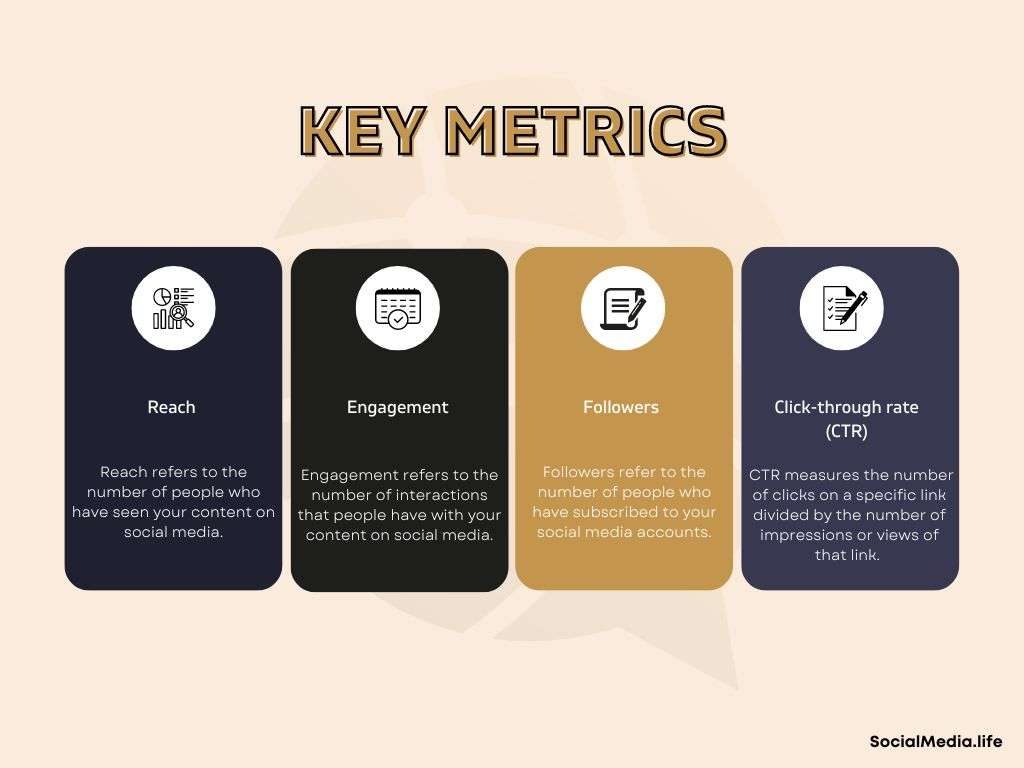
Understanding the key metrics of your social media accounts allows you to gain valuable insights into your audience. This information can then be used to inform your strategy and help you engage with your target audience more effectively.
Tracking performance
Tracking and monitoring your social media account performance over time is crucial for understanding the impact of your social media efforts and making informed decisions about future strategies. Here are some tips for effectively tracking and monitoring your social media accounts:
Set Clear Goals
The first step in tracking and monitoring your social media performance is to set clear and measurable goals. This could be anything from increasing your reach, to growing your followers, to boosting engagement on your posts. Having clear goals in place will help you focus your efforts and measure your success.
Use a Reliable Analytics Tools
There are a variety of analytics tools available that can help you track and monitor your social media performance. For example, use built-in analytics tools provided by social media platforms, or third-party tools such as Google Analytics or Hootsuite Insights. These tools will provide you with a wealth of data and insights about your audience, reach, engagement, and more.
Regularly Check Your Metrics
Regularly checking your social media metrics is crucial for understanding the impact of your efforts over time. Check your analytics data daily, weekly, or monthly, depending on your goals and the volume of activity on your accounts. Regularly checking your metrics will help you identify trends and make informed decisions about your social media strategy.
Compare Performance Over Time
To truly understand the impact of your social media efforts, it’s important to compare your performance over time. This could mean comparing your metrics from one week to the next, or from one month to the next. Comparing your performance over time will help you identify any changes in your reach, engagement, and other key metrics.
By using these tips, you can effectively track and monitor your social media account performance over time and use the data to inform your social media strategy.
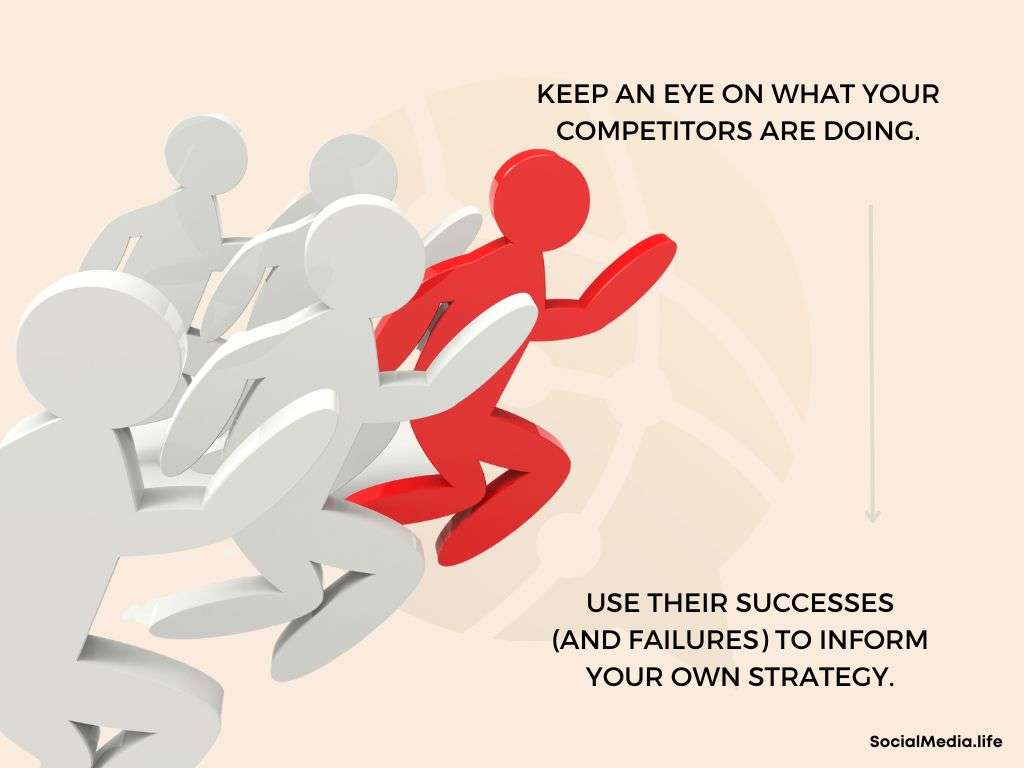
IV. Advanced Social Media Analysis
Social media analytics can provide you with valuable insights into your audience’s interests, preferences, and behaviors. This helps you create content and messaging that speaks directly to them. Here’s how you can use analytics to inform your content strategy and get the best results from your social media activities.
Get to know your audience
By analyzing your audience’s demographics, location, interests, and more, you can get a better understanding of who they are and what they care about. This information can help you tailor your content and messaging, and increase the likelihood that they’ll engage with your posts.
Track engagement
One of the most important metrics for tracking social media success is engagement. This includes likes, comments, shares, and other forms of interaction with your content. By tracking your engagement rates over time, you can get a sense of what types of content and messaging resonate best with your audience, and adjust your strategy accordingly.
Monitor your competitors
Keep an eye on what your competitors are doing, and use their successes (and failures) to inform your own strategy. By analyzing their social media accounts, you can see what types of content and messaging resonate with their audience and use that information to improve your own approach.
Analyze what works and what doesn’t
Regularly review your analytics data to see what’s working and what’s not. Look at the types of content and messaging that have generated the most engagement and try to replicate that success. If you notice that certain types of content or messaging isn’t resonating with your audience, try to adjust your approach or experiment with something different.
Using analytics to tailor your content and messaging is an important part of a successful social media strategy. Get to know your audience, track their engagement, monitor your competitors, and analyze what works and what doesn’t. With the right tools, patience, and practice – you can create content and messaging that speak directly to your audience and drive results.
Conclusion
Social media analysis is a crucial tool for businesses to understand their target audience and improve their social media strategy. By analyzing data and insights about your audience, you can better understand their behavior, preferences, and interests. This allows you to create specific content that resonates with them. The result of social media analysis can have a powerful impact on a business, with studies showing a 33% increase in website traffic, a 28% increase in lead generation, and a 23% increase in sales.
There are a variety of tools available to help with social media analysis. This includes built-in analytics tools from social media platforms and more advanced tools such as Google Analytics. Regularly checking and monitoring your data will help you understand your audience’s behavior and make informed decisions about your content strategy.
Remember, social media analysis is an ongoing process. It’s important to continue learning and experimenting with different tools and techniques to improve your audience analysis skills. With the right tools and approach, you can gain valuable insights into your target audience and create a more effective social media strategy. Don’t stop here; keep exploring and keep learning!

